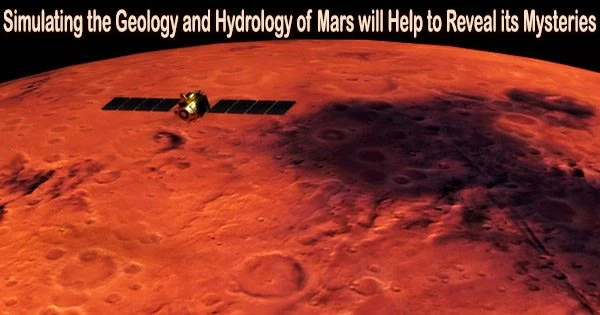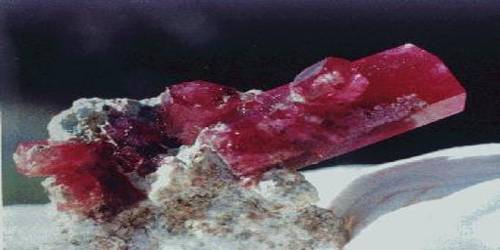Humans have been fascinated by Mars probably since the first of the species turned their gaze to the night sky. Space exploration today attests to that continuing fascination.
Since the 1960s, more than 40 missions have tried to reach the red planet. As a result, there are currently three rovers active on the Martian surface, plus one lander and one helicopter, while eight orbiters circle the planet.
Simulating the red planet’s geology and hydrology can reveal how the landscape has changed, helping the search for landing sites for future missions.
Special interest
“Many of the planets and moons in our solar system are very interesting, but Mars is a little special,” said François Forget, an atmospheric scientist at Sorbonne University in France. “Nowadays, Mars is quite similar to Earth, but in the past 3 to 4 billion years ago it was even more similar.”
Numerous geological facts have been discovered as a result of the intensive exploration to date, but much is still unknown about the planet four from the sun.
There are indications that Mars’ northern hemisphere previously had a large ocean covering it, and other places have scars left by rivers and glaciers.
Yet the climatic processes that shaped the planet observed today remain a mystery.
Many of the planets and moons in our solar system are very interesting, but Mars is a little special. Nowadays, Mars is quite similar to Earth, but in the past 3 to 4 billion years ago it was even more similar.
François Forget
As far back as 4 billion years ago, when life started to appear on Earth, Mars had rivers and lakes of liquid water. This raises the possibility that life also developed on Mars.
However, because of what they might tell us about the climate of Earth, scientists are particularly curious about the mechanisms that gave rise to the arid, desert planet we see today.
Areas of Mars’s surface are more than 3 billion years old. Such data are not available on Earth since life has radically changed the planet’s early history and erased most of it.
Something else also makes Mars special: it’s a place where astronauts are hoping to go at some point.
The European Space Agency, or ESA, and the US National Aeronautics and Space Administration NASA are working towards sending astronauts to Mars.
Time test
In an effort to shed light on some of the mysteries surrounding the history of the planet, Forget is the principal investigator on an EU-funded project building an evolutionary model of Mars.
Called Mars through time, the project began in late 2019 and is due to last into most of 2025.
Forget notes that the impact of features like glaciers, rivers, and lakes is difficult to simulate, especially over long timescales, and that the current climate models for Mars only cover brief periods of many years of its history.
The project’s model is made to run for tens of thousands, or possibly millions, of years while mimicking how geological features have changed over time and how the atmosphere has changed.
“While current climate models require assumptions about where water sat on the planet’s surface, the evolution one for Mars is designed to work out where water would have naturally developed and reached a stable equilibrium,” says Forget.
This is done by incorporating more detail into the model such as the effect of microclimates.
For instance, slopes facing a planet’s pole are often cooler, which could contribute to the development of ice and glaciers. On warmer slopes facing the equator, liquid water might be more likely.
“If you wanted to simulate the Earth but you didn’t know anything about it, you would put water in the oceans and then slowly Earth’s evolution model would, for instance, build the Antarctic ice sheets,” Forget said. “You want to be able to do the same on Mars, and of course, the model will create lakes, seas and rivers.”
It also incorporates large-scale changes that occur on longer geological timescales. Obliquity, or the tilt of Mars’ rotational axis, normally varies every 50,000 years and is associated with significant climate changes.
Carbon-dioxide glaciers
The model is based on historical information about Mars, including geology and terrain, the locations of rivers, lakes, and glaciers, as well as the composition of the atmosphere. They also make some inferences regarding data that is absent.
The scientists tweak the parameters and assumptions after the simulation runs until the evolution of the model Mars agrees with what is known about the planet both historically and currently.
According to Forget, once a model is compatible with the geological records, it offers details on the ecology, chemistry, and atmosphere of the planet and how they changed.
The model has so far proven that some odd-looking moraines debris left behind by glaciers is probably from ones made of ones formed of frozen carbon dioxide.
The simulations have also proposed a possible mechanism for the formation of these CO2 glaciers and demonstrated that they would have had a significant impact on the atmosphere of Mars.
Scientists entered a hydrogen-rich parameter into their model to gain a potential hint of how Mars’s climate might have been warm enough to sustain liquid lakes and rivers in order to test one notion of how liquid water might have existed on the Martian surface.
The model demonstrated that Mars may have experienced a substantial greenhouse effect and increased in temperature if it had an atmosphere rich in hydrogen in the past.
Frozen reservoirs
At the other end of the temperature spectrum, a better understanding of the formation of glaciers and where frozen water might exist today could help with manned missions to Mars.
“Having access, without too much difficulty, to water ice on Mars will be very helpful, according to NASA,” Forget said. “They have set up project teams looking at where water ice can be found and the Mars through time project can really contribute.”
The EU research could also provide information on where liquid water might be found. As it happens, these are areas where astronauts don’t want to land.
That’s because of a concept known as planetary protection. The last thing that astronauts want to do is introduce Earth-born bacteria to Mars, especially in areas with liquid water where they can flourish.
















